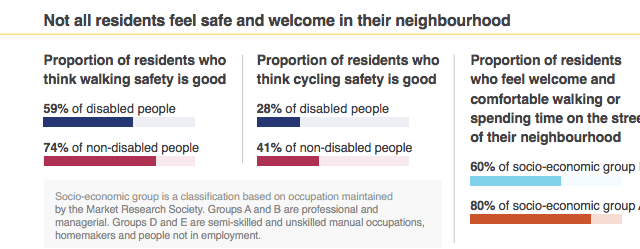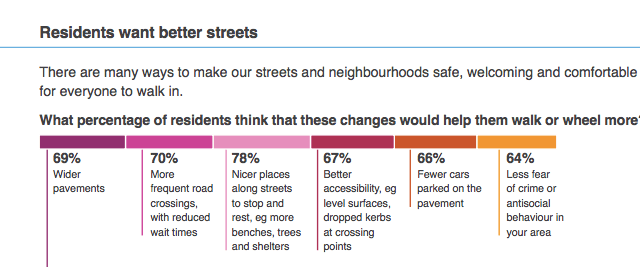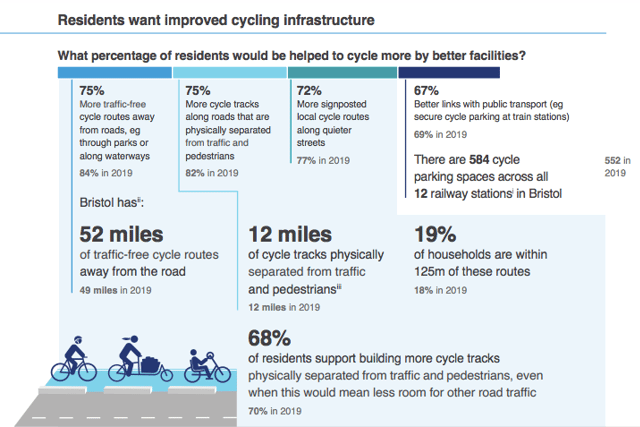Walking and cycling in Bristol ‘at same level as 2019’ - says Sustrans report calling for safety measures
and live on Freeview channel 276
The Sustrans Bristol Walking and Cycling Index report has been released, exploring the city’s activity and exploring areas of improvement.
Clearly, despite Bristol having an active community and captive audience for cycling and walking, residents are asking for wider pavements, safer streets and better cycling tracks along roads.
Advertisement
Hide AdAdvertisement
Hide AdThe report shows that residents want more funding for walking and wheeling and feel this would help support more liveable neighbourhoods.
As the UK’s biggest ever study of walking, wheeling and cycling, the report gives us an incredible insight into the measures which can be taken across the city to enable more people to walk or cycle.
This is the fourth report from Bristol produced in partnership with Bristol City Council. The data in this report comes from 2021 and includes local walking and cycling data, modelling and an independent survey of 1,292 residents aged 16 or above in Bristol.
The report shows that “participation in walking, wheeling and cycling on a regular basis is about the same as in 2019”. A clear reason for this could be the evident want for safer infrastructure across the city for both cycling and walking.


Advertisement
Hide AdAdvertisement
Hide Ad74% of non-disabled and 59% of disabled residents think walking safety is good, while 41% of non-disabled and 28% of disabled residents think cycling safety is good. The study found that residents want more funding for walking, wheeling, cycling and public transport with 55% wanting more for walking and 61% want more for cycling.
Among Bristol residents, 68% of people supported that more cycle tracks along roads, physically separated from traffic and pedestrians would make the city a safer place and encourage them to get on their bikes.
In addition to this, 65% of residents agreed that increasing space for people socialising, walking and cycling on their local high street would improve their local area.
So, what infrastructure, in particular, did the study find Bristol residents want the most and felt would improve the safety in the local area the most? When it comes to walking safety, wider pavements came out top.


Advertisement
Hide AdAdvertisement
Hide AdIn fact, 69% of residents think that wider pavements would help them walk or wheel more, and 78% think that nicer places along streets to stop and rest, eg more benches, trees and shelters, would also help them to walk more.
Gordon of Bristol Walking Alliance and Co-Chair of Bristol Disability Equality Forum feels that wider pavements would definitely improve the picture in areas such as Westbury-on-Trym. “I’d love to see a big improvement in the environment for pedestrians in Westbury-on-Trym, which would mean wider, better pavements, getting rid of obstructions and so on,” he says.
“We know that if something is improved for disabled accessibility, it generally improves things for everyone. Improving maintenance of footways and replacing cracked paving slabs removes trip hazards, and shifting sign posts to reduce the number of obstructions on the footway – there have to be better solutions.”


As for cycling safety, the main infrastructure people hope for is separated cycle paths. Despite Bristol having 52 miles of traffic-free cycle routes away from the road, 75% of Bristol residents felt that more traffic-free cycle routes away from roads, eg through parks or along waterways, would help them to cycle more.
Advertisement
Hide AdAdvertisement
Hide AdA further 75% expressed that more cycle tracks along roads that are physically separated from traffic and pedestrians would help them to cycle more, and 72% felt more signposted local cycle routes along quieter streets would help.
Sustrans has a vision that the West of England walking and cycling network is the most coherent, accessible and comprehensive in the UK, and is working through reports such as these to take steps towards this goal.
Not only does it help residents, but also the climate crisis.
Councillor Kye Dudd, Cabinet Member for Climate, Ecology, Energy and Waste said of the report: “Cleaning up our transport network – the biggest source of emissions nationally and locally – and enabling more cycling and walking journeys will be a critical element of that response as the city as a whole moves towards carbon neutrality and climate resilience by 2030.”
Comment Guidelines
National World encourages reader discussion on our stories. User feedback, insights and back-and-forth exchanges add a rich layer of context to reporting. Please review our Community Guidelines before commenting.
